The Best Heart-Healthy Chinese Food Recipes for a Nutritious Lifestyle
For those seeking a healthier approach to Chinese food, there's a wide range of heart-healthy Chinese food to choose from. These nutritious meals can help you maintain a well-balanced diet while still indulging in the wonderful tastes of Chinese cooking. By utilising some kitchen know-how and experimenting with alternative ingredients, you can adapt traditional Chinese recipes into meals that are not only delicious but also beneficial for your overall health.
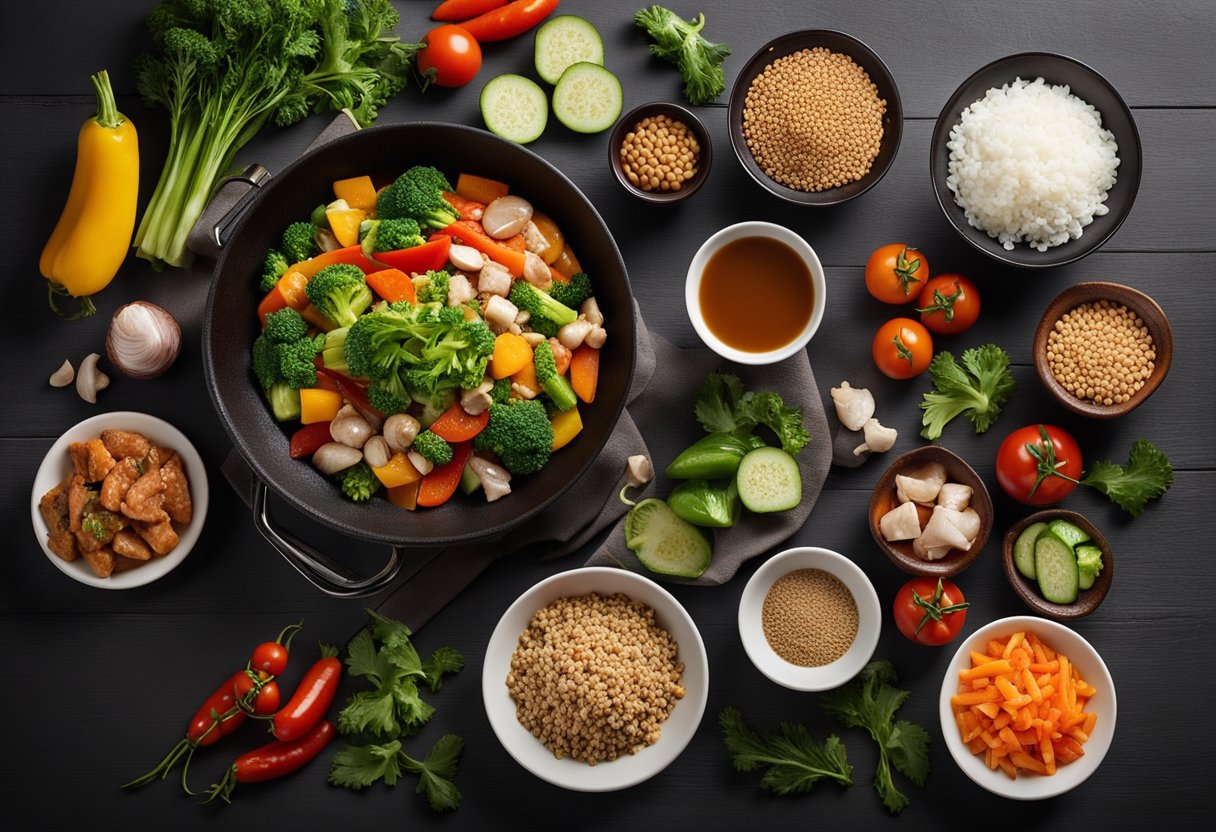
When it comes to healthy Chinese food, nutrition is key. By choosing the right ingredients and cooking methods, you can create dishes that are rich in vitamins, minerals, and other essential nutrients. For example, seafood is an excellent source of omega-3 fatty acids, which can help reduce inflammation and improve heart health. You can incorporate seafood into your Chinese recipes by using shrimp, scallops, or fish as a protein source.
To get started with heart-healthy Chinese cooking, it's important to understand the essentials of this cuisine. From low-sodium sauces and seasonings to cooking techniques that promote healthy eating, there are many factors to consider. By following some simple guidelines and experimenting with new recipes, you can discover a whole new world of delicious and nutritious Chinese cuisine.
Key Takeaways
- Heart-healthy Chinese food can be delicious and nutritious with the right ingredients and cooking methods.
- Seafood is a great choice for adding protein and omega-3 fatty acids to your Chinese recipes.
- By understanding the essentials of heart-healthy Chinese cuisine, you can create meals that support your health goals while satisfying your taste buds.
Essentials of Heart-Healthy Chinese Cuisine
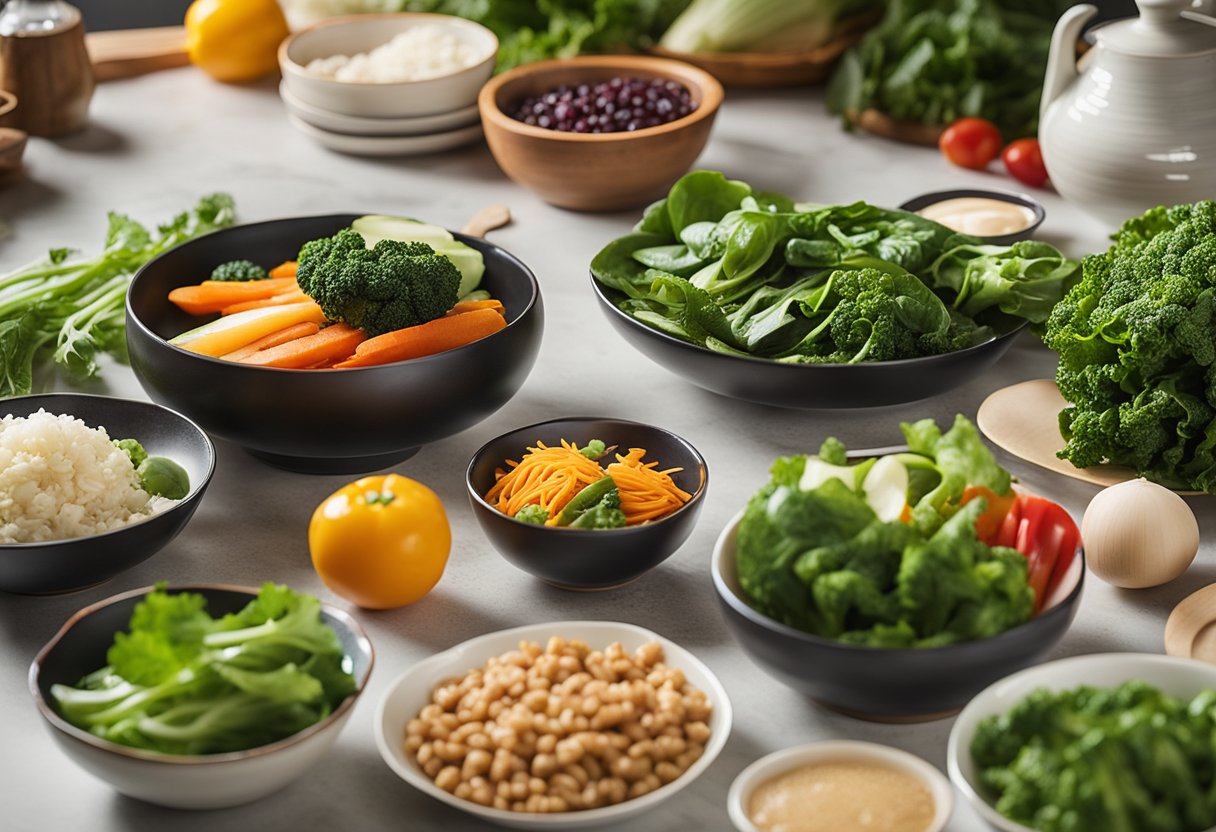
Understanding Chinese Food and Nutrition
Chinese cuisine is known for its bold flavors and diverse ingredients. However, not all Chinese food is created equal when it comes to heart health. Understanding the basics of Chinese food and nutrition can help you make healthier choices when dining out or cooking at home.
Traditional Chinese cuisine is based on the principles of balance and harmony. This means that meals are typically a combination of different flavors, textures, and colours to create a well-rounded and satisfying eating experience. In addition, Chinese cuisine emphasizes the use of fresh and seasonal ingredients, which can be beneficial for heart health.
Selecting Healthy Ingredients
When it comes to heart-healthy Chinese cuisine, selecting the right ingredients is key. Here are some tips to keep in mind:
-
Choose lean proteins: Chinese cuisine offers a variety of protein options, including chicken, beef, pork, tofu, and seafood. For heart health, it's best to choose lean proteins such as skinless chicken breast, lean beef cuts, and tofu. Seafood, such as salmon, tuna, and shrimp, is also a great option as it is high in heart-healthy omega-3 fatty acids.
-
Load up on vegetables: Vegetables are an essential part of any heart-healthy diet, and Chinese cuisine is no exception. Choose a variety of colorful vegetables such as broccoli, bok choy, snow peas, and carrots. These vegetables are high in fiber, vitamins, and minerals, which can help support heart health.
-
Go for healthy fats: While Chinese cuisine can be high in fat, not all fats are created equal. Choose healthy fats such as those found in nuts, seeds, and avocado. Cooking with heart-healthy oils such as olive oil and canola oil can also help support heart health.
-
Choose whole grains: Chinese cuisine often includes rice and noodles, which can be high in carbohydrates. For heart health, choose whole grain options such as brown rice and whole wheat noodles. These options are higher in fiber and other important nutrients than their refined counterparts.
By following these tips, you can enjoy delicious and heart-healthy Chinese cuisine at home or when dining out. Don't forget to incorporate seafood, such as salmon or shrimp, for an extra boost of heart-healthy omega-3 fatty acids.
Heart-Healthy Recipe Foundations
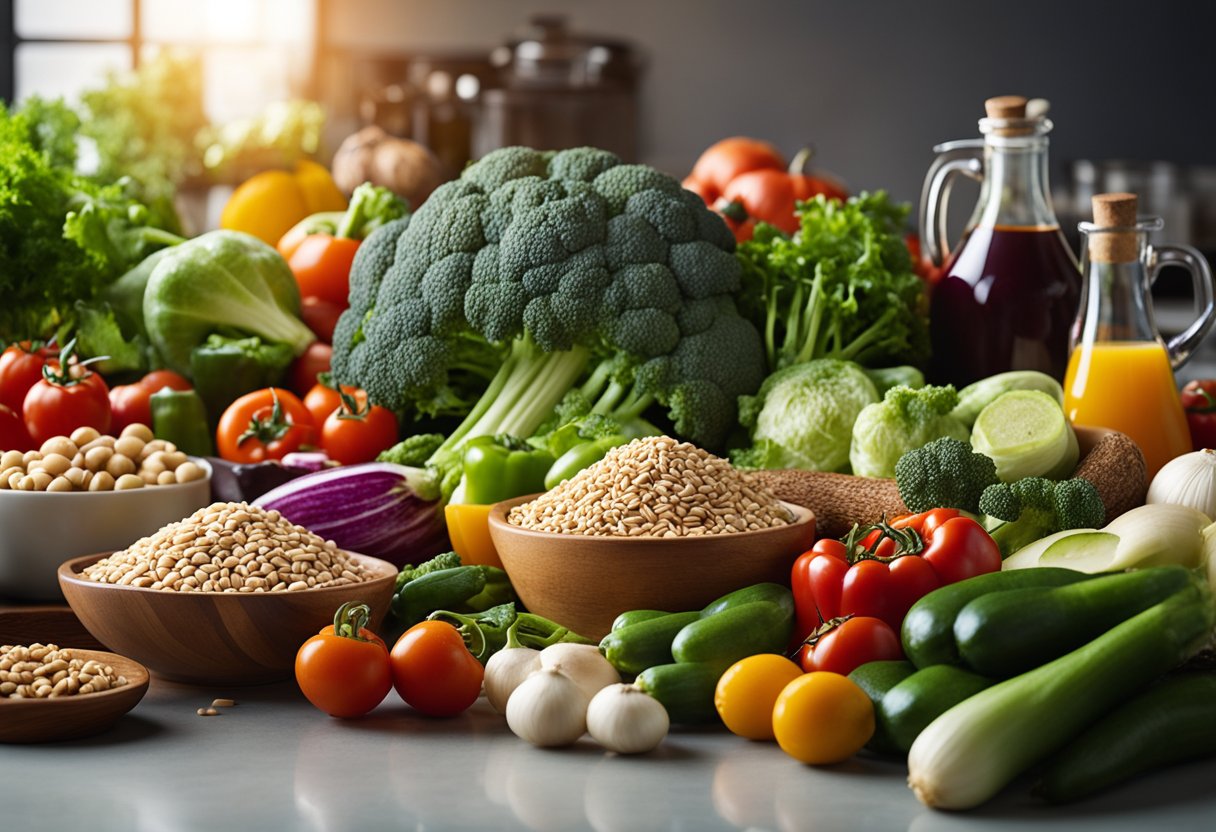
When it comes to Chinese food, there are plenty of options that can be both delicious and heart-healthy. By making smart choices about the ingredients you use, you can create meals that are low in saturated fat and sodium, and high in nutrients that support heart health.
Rice and Alternatives
Rice is a staple in many Chinese dishes, but not all rice is created equal. Brown rice is a great choice for heart health, as it is high in fiber and nutrients like magnesium and potassium. If you're looking for a lower-carb option, cauliflower rice is a great alternative that can be used in many of the same dishes.
Protein Choices for a Strong Heart
Protein is an important part of any healthy diet, but not all sources are created equal. When it comes to Chinese food, tofu is a great option that is low in saturated fat and high in protein. Chicken is another good choice, as long as you choose lean cuts and remove any visible fat. Seafood is also a great option, as it is high in heart-healthy omega-3 fatty acids. Some good choices include salmon, tuna, and shrimp. Beans are another great source of protein that can be used in many Chinese dishes.
By making smart choices about the ingredients you use, you can create delicious Chinese dishes that are good for your heart. Consider incorporating some of these heart-healthy ingredients into your next meal, and enjoy a tasty and nutritious dish that you can feel good about.
Low-Sodium Sauces and Seasonings

When it comes to creating heart-healthy Chinese food recipes, it's important to pay attention to the sauces and seasonings you use. Many traditional Chinese sauces and seasonings contain high amounts of sodium, which can be detrimental to heart health. However, there are plenty of low-sodium options available that can still add flavour to your dishes.
Creating Your Own Sauces
One way to control the sodium content of your sauces is to create your own. By making your own sauces, you can adjust the ingredients to suit your tastes and dietary needs. For example, you can use reduced-sodium soy sauce instead of regular soy sauce, or omit the salt altogether and rely on other flavourful ingredients like ginger and garlic.
Here is a simple recipe for a low-sodium stir-fry sauce:
| Ingredient | Quantity |
|---|---|
| Reduced-sodium soy sauce | 2 tbsp |
| Rice vinegar | 1 tbsp |
| Honey | 1 tbsp |
| Ginger, grated | 1 tsp |
| Garlic, minced | 1 tsp |
| Sesame oil | 1 tsp |
Simply whisk all the ingredients together in a bowl and use it to flavour your stir-fry dishes.
Herbs and Spices to Enhance Flavour
Another way to add flavour to your Chinese dishes without relying on high-sodium sauces is to use herbs and spices. Ginger, garlic, and sesame oil are all great options for adding flavour to your dishes. Additionally, you can try using other herbs and spices like coriander, star anise, and Szechuan peppercorns to add depth and complexity to your dishes.
If you're looking to incorporate seafood into your heart-healthy Chinese recipes, consider using shrimp or scallops. These seafood options are low in fat and high in protein, making them a great addition to stir-fry dishes. Just be sure to choose fresh seafood and avoid adding too much salt or sodium-heavy sauces to your dishes.
By using low-sodium sauces and seasonings and incorporating herbs and spices into your dishes, you can create heart-healthy Chinese food recipes that are both delicious and good for you.
Cooking Techniques for Healthier Meals
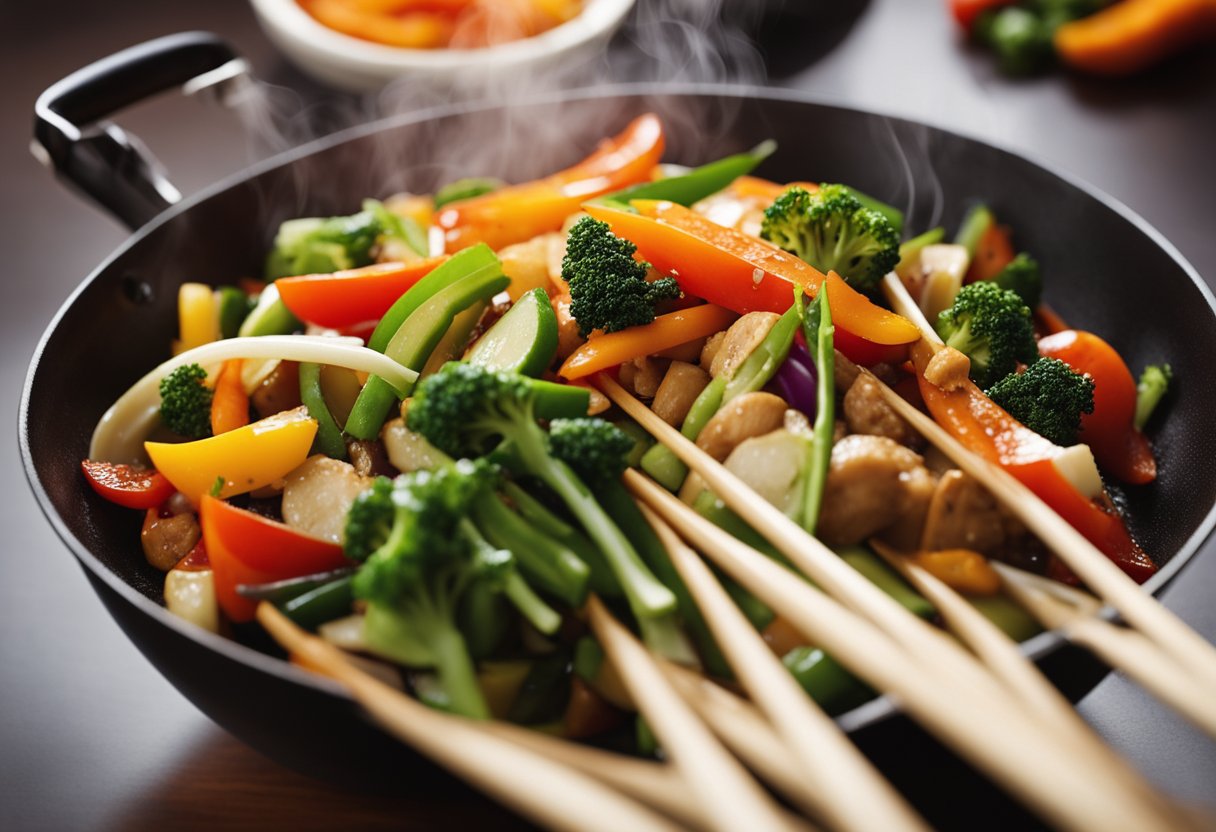
When it comes to Chinese cuisine, there are many cooking techniques that can be used to create delicious, heart-healthy meals. Here are some of the best techniques to try out:
Stir-Frying and Steaming
Stir-frying is a popular cooking technique in Chinese cuisine that involves cooking ingredients quickly over high heat in a small amount of oil. This technique is great for creating healthy meals because it allows you to cook vegetables and lean proteins like skinless chicken breasts quickly without adding a lot of fat.
Steaming is another great technique for creating healthy Chinese meals. Steaming involves cooking food over boiling water, which helps to retain the nutrients in the food. Steamed vegetables are a great side dish for any Chinese meal, and you can also steam seafood like shrimp or scallops for a heart-healthy protein source.
Baking and Broiling
Baking and broiling are two other cooking techniques that can be used to create healthy Chinese meals. Baking involves cooking food in the oven, while broiling involves cooking food under the broiler. Both techniques are great for cooking lean proteins like skinless chicken breasts or seafood.
One heart-healthy recipe to try is baked General Tso chicken. To make this dish, marinate skinless chicken breasts in a mixture of soy sauce, rice vinegar, honey, and ginger. Then, bake the chicken in the oven until it is cooked through and crispy. Serve with steamed vegetables for a complete meal.
If you're looking for a seafood option, try broiling shrimp with a mixture of garlic, ginger, and soy sauce. Serve with steamed vegetables and brown rice for a heart-healthy meal that's sure to satisfy.
By using these cooking techniques and incorporating ingredients like stir-fried or steamed vegetables and skinless chicken breasts, you can create delicious, heart-healthy Chinese meals that are both nutritious and satisfying.
Heart-Healthy Chinese Recipes
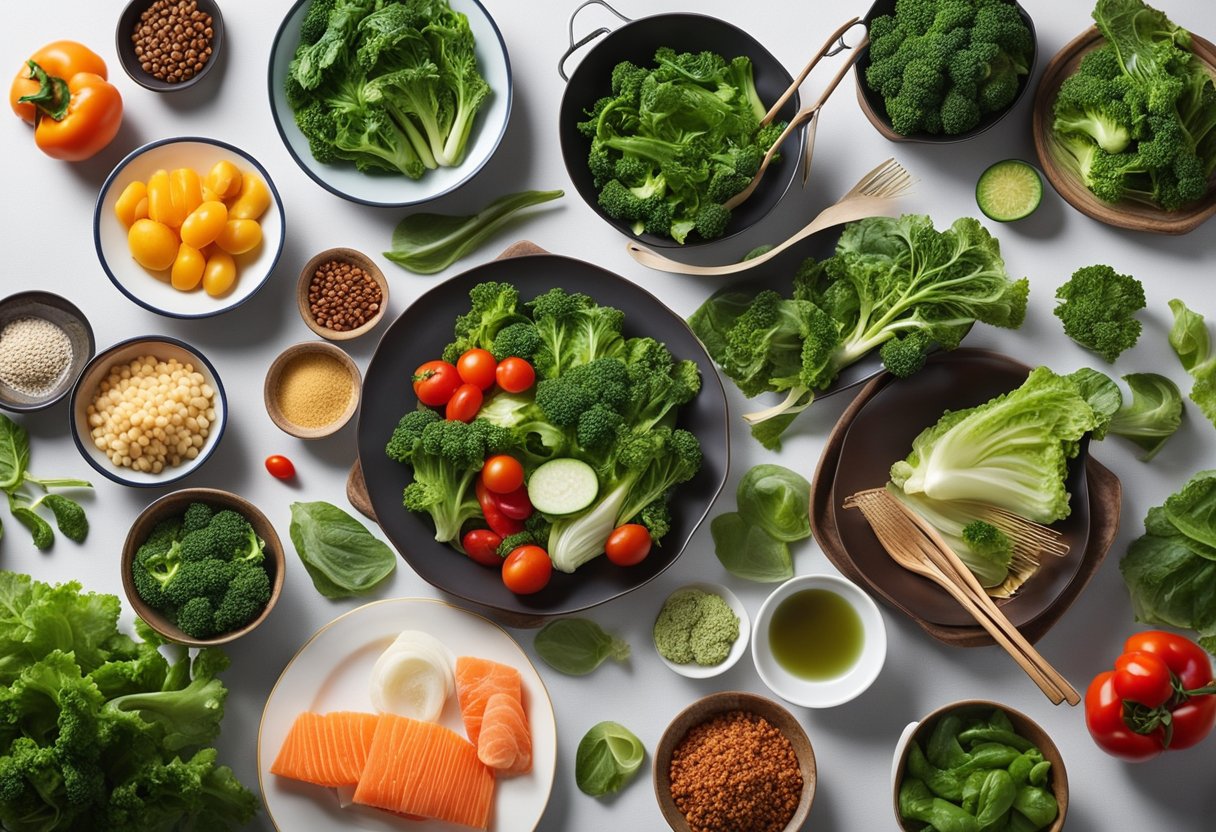
Eating heart-healthy Chinese food is easier than you think. With a few tweaks, you can enjoy your favourite Chinese dishes without compromising your heart health. Here are some delicious heart-healthy Chinese recipes to try out.
Vegetable-Focused Dishes
If you're looking for a vegetable-focused dish, try broccoli stir fry. Broccoli is a great source of fibre and vitamin C, and it's also low in calories. To make this dish, stir fry broccoli with garlic, ginger, and soy sauce. You can also add some mushrooms, carrots, and other vegetables for added flavour.
Another great vegetable-focused dish is moo goo gai pan. This dish is made with chicken, mushrooms, and other vegetables, and it's a great source of protein and fibre. To make this dish, stir fry chicken with mushrooms, snow peas, and other vegetables, and season with soy sauce and sesame oil.
Wholesome Meat and Seafood Options
If you're looking for wholesome meat and seafood options, try chicken lettuce wraps. This dish is made with ground chicken, water chestnuts, and other vegetables, and it's a great source of protein and fibre. To make this dish, cook the chicken with garlic and ginger, and then add water chestnuts, mushrooms, and other vegetables. Serve the mixture in lettuce leaves for a healthy and delicious meal.
Shrimp fried rice is another great option. Shrimp is a great source of protein and omega-3 fatty acids, which are good for your heart. To make this dish, cook brown rice and stir fry shrimp with vegetables like peas, carrots, and onions. Season with soy sauce and sesame oil for added flavour.
Finally, beef with snow peas is a great option for meat lovers. Snow peas are low in calories and high in fibre, and they pair well with beef. To make this dish, stir fry beef with snow peas, garlic, and ginger, and season with soy sauce and sesame oil.
Propose the use of seafood in the recipe as a suggestion where applicable. If you're looking to add seafood to any of these dishes, try using prawns or scallops. Both are great sources of protein and omega-3 fatty acids, and they pair well with many Chinese flavours.
Frequently Asked Questions
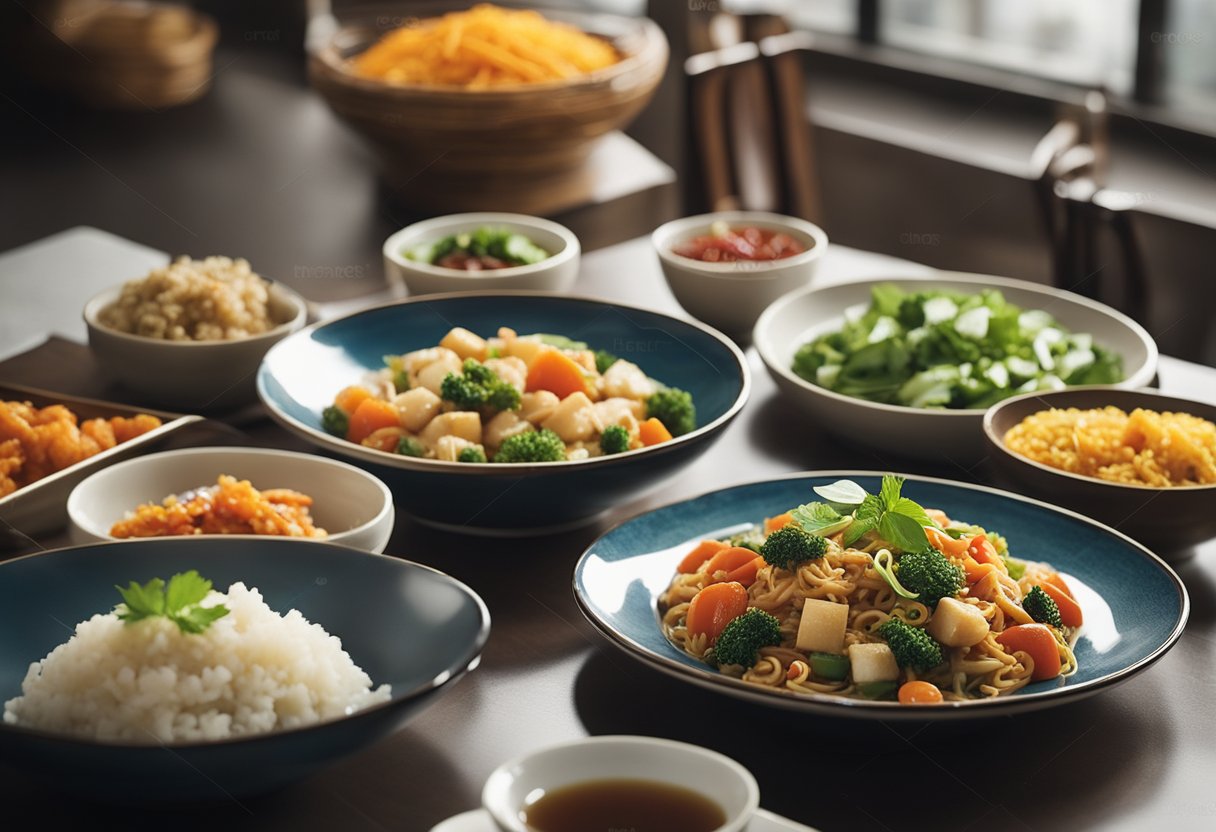
What are some heart-healthy Chinese chicken dishes?
If you're looking for heart-healthy Chinese chicken dishes, you can try steamed chicken with ginger and scallions. This dish is a great source of lean protein and is low in fat and calories. You can also try stir-fried chicken with vegetables, such as broccoli, bell peppers, and carrots. Just be sure to use a minimal amount of oil and avoid adding too much salt or soy sauce.
How can I make a heart-healthy Chinese main course?
To make a heart-healthy Chinese main course, focus on using plenty of vegetables and lean protein sources, such as chicken, fish, or tofu. Try to avoid deep-fried dishes and opt for steamed, boiled, or stir-fried foods instead. You can also use spices and herbs to add flavour instead of relying on salt or soy sauce.
Are there any low-fat Chinese recipes suitable for weight loss?
Yes, there are many low-fat Chinese recipes that are suitable for weight loss. Try steamed or stir-fried vegetables, such as bok choy, broccoli, and snow peas, or opt for lean protein sources, such as chicken, fish, or tofu. You can also use herbs and spices to add flavour without adding calories.
What vegetarian Chinese dishes are good for a healthy heart?
If you're looking for vegetarian Chinese dishes that are good for a healthy heart, you can try stir-fried vegetables with tofu or steamed vegetables with garlic and ginger. You can also try vegetable dumplings or spring rolls, but be sure to choose ones that are baked or steamed instead of deep-fried.
Which Chinese food options are recommended for Weight Watchers?
If you're following the Weight Watchers program, you can choose steamed or stir-fried vegetables, lean proteins such as chicken, fish, or tofu, and soups with clear broth. Avoid deep-fried dishes and those with heavy sauces or added sugar.
How can I find Chinese dishes that are low in sodium?
To find Chinese dishes that are low in sodium, you can look for dishes that are steamed, boiled, or stir-fried with minimal oil and salt. You can also ask the restaurant to prepare your dish with less salt or soy sauce, or choose dishes that are made with fresh herbs and spices instead. If you're cooking at home, try using low-sodium soy sauce or other seasonings to add flavour. Additionally, seafood such as prawns, scallops, and squid can be a great option to add flavour and nutrients to your dish.


